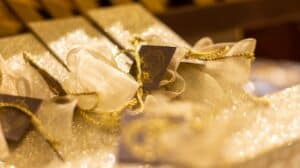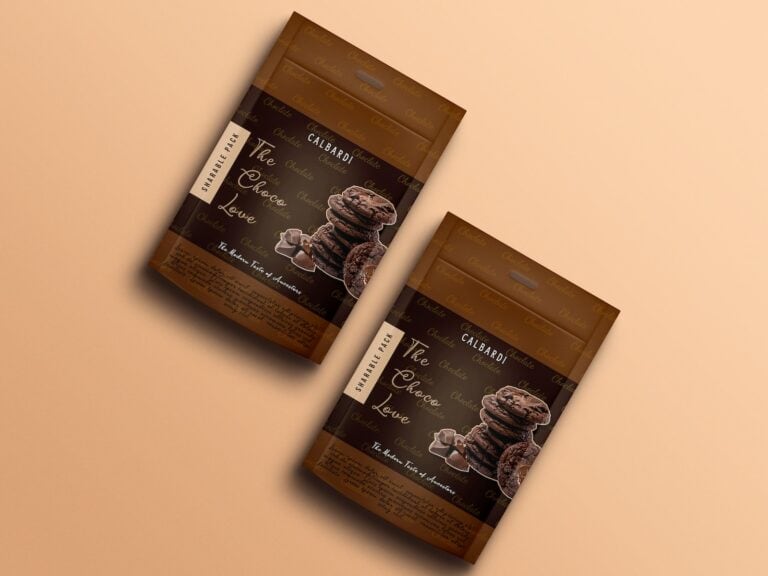In the world of sweets, the art of chocolate packaging design plays a pivotal role in capturing the essence of the treat inside. I’ve always been fascinated by how a wrapper can tell a story, beckoning chocolate lovers with just a glimpse. From the vivid depictions of Peruvian culture to the meticulous German journals, each design is a doorway to a unique chocolate experience.
As I unwrap the secrets behind these designs, you’ll discover how packaging is not just about looks but also about heritage and craftsmanship. The hand-wrapped Marou bars from Vietnam and the bold African motifs are more than just eye candy; they’re a testament to tradition. Join me as we delve into the intricate world of chocolate packaging and see how it’s shaping the industry, one bar at a time.
The Importance of Chocolate Packaging Design

The Art of Chocolate Packaging Design
In the realm of sweets, the outer attire of chocolate is as critical as the decadent treat inside. I’m drawn to the meticulous details in chocolate packaging aesthetics, realizing that these designs do more than just please the eye—they carry the brand’s essence to the consumer. As I delve deeper into this topic, I’ve discovered that the art of chocolate packaging design is pivotal in distinguishing a chocolate bar from the plethora of options on the market.
Packaging design techniques have evolved, now often featuring bold, high contrast color palettes and minimal labels that strikingly stand out on the shelves. Consider the unusual square shape of certain artisan chocolatier’s products—it carves its own unique space amid the traditional rectangle norms. The simple visual language communicates elegance and quality without uttering a word, showcasing a clear brand positioning.
Visual Appeal in Chocolate Packaging
When I explore a chocolate shop, the visual language of each chocolate packaging tells a story—some whisper of exotic origins while others shout with vibrant bright colors. The visual appeal in chocolate packaging is undeniably a driving force for chocolate lovers like me, compelling us to reach out and experience what lies within. Artisanal brands, such as Coco Chocolatier, take pride in their specially commissioned original artwork that wraps around their chocolate bars, turning what’s often seen as a simple indulgence into a gallery-worthy piece.
Handmade chocolates, in particular, benefit greatly from the careful attention to packaging design. A coco product with its ethical credentials clearly displayed on an elegant design reminds consumers not only of the rich, palm oil-free delicacy they are purchasing but also reassures them of the positive impact their choice has on sustaining developing economies.
Chocolate Packaging as a Brand Statement
It’s fascinating to observe how chocolate bars encapsulate their brand statement with their wrappings. In a competitive industry, chocolate packaging operates as a tactile manifesto—a declaration of what the brand stands for. Packaging design becomes a visual language based on an identity, challenging industry norms and claiming a position in the global market. Whether it’s through playful design, striking geometric stock designs or gallery captions framed on the wrapper, the intention is clear: to create an authentic connection with me, the consumer.
Telling a Story with Chocolate Wrappers

As someone deeply fascinated by the art of chocolate packaging design, I’ve observed how packaging is not just a protective layer for the precious cargo within, but it’s a canvas that tells a story. Chocolate packaging aesthetics have evolved to engage and captivate chocolate lovers, sometimes even before tasting the chocolate bar.
The Art of Chocolate Packaging Design
Artisan chocolatiers excel in crafting not only delectable chocolate bars but also using packaging design techniques that elevate their products to works of art. It’s a dance of colors, textures, and imagery that creates an emotional narrative on a wrapper. These visual appeal in chocolate packaging are not mere accidents; they are deliberate strategies employed to create a bond between the product and the consumer.
What makes this packaging unique is the use of simple visual language that communicates volumes. Each chocolate packaging I come across seems to whisper secrets of its origin, flavor, and essence. By integrating minimal labels and striking geometric stock designs, the visual language not merely speaks but sings of the brand’s defining story and values.
The high contrast color palette often found on these wrappers isn’t just eye-catching, it’s a strategic choice to carve out a unique space on the shelves in a competitive industry. The bright colors of chocolate packaging become a beacon for those seeking a new decadent treat. In adopting a simple visual language or gallery concept, the wrapper becomes a preview of the taste experience to come.
Crafting Identity with Each Chocolate Bar
Each chocolate bar nestles within their wrappers, much like a piece of fine art in a gallery – with the gallery captions framed not in gilt frames but through textured papers and foils. I see handmade chocolates as statements of individuality; the packaging design as their proclamation. This approach isn’t just about being visually distinctive; it’s about setting a clear brand position and, at times, challenging industry norms.
Exploring Cultural Designs in Chocolate Packaging
As I delve deeper into the art of chocolate packaging design, it’s fascinating to see how cultural designs are making a significant impact. Chocolate packaging isn’t just about containing a product; it’s about conveying a message that resonates with chocolate lovers across the globe. With my experience in design and branding, I’ve seen first-hand how an aesthetic drawn from a rich cultural tapestry can transform a simple chocolate bar into an exotic storytelling medium.
The Art of Chocolate Packaging Design: A Cultural Canvas
When incorporating cultural elements into chocolate packaging, it’s crucial to strike a balance. Packaging must harness traditional motifs without becoming clichéd. I’ve observed how successful chocolate brands have adopted packaging design techniques that celebrate heritage through modern interpretation, thus enhancing the overall visual appeal.
Some brands, for instance, have cleverly used packaging aesthetics to highlight their ethical credentials. By showcasing the origins of cocoa and the communities involved in its production, these companies tell a story that not only appeals aesthetically but also creates a sense of social awareness and responsibility among consumers.
Chocolate Bars as Cultural Artifacts
Chocolate bars themselves are like ambassadors of taste and culture. I’m particularly drawn to designs that make use of unusual square shapes, bright colors, and striking geometric stock designs associated with specific cultural identities. The simple visual language communicates a sense of place and tradition while maintaining a modern and elegant design.
Moreover, with the rise of artisan chocolatiers, I’ve seen an upswing in handmade chocolates that come wrapped in specially commissioned original artwork. This approach turns what would be an ordinary chocolate bar into a covetable item, further cementing its brand line and clear brand positioning.
Pioneering New Norms Through Design
Embracing cultural motifs isn’t just about aesthetics; it’s about challenging industry norms. By doing so, brands send a powerful brand statement: they’re committed to diversity and inclusivity. The symbiosis of edible delights and visual language based on various global cultures plays into this narrative.
The Craftsmanship Behind Hand-Wrapped Bars

As an avid observer of the chocolate industry, I’ve noticed a delightful trend: artisan chocolatiers are turning chocolate wrapping into an art form. The art of chocolate packaging design goes beyond mere aesthetics; it’s about evoking emotions and storytelling that resonate with chocolate lovers worldwide.
Mastering the Aesthetics: Packaging as Art
Exploring handmade chocolates showcases the marriage of flavor and design. Each piece tells a story, especially those enrobed in specially commissioned original artwork. The visual appeal in chocolate packaging isn’t just about being eye-catching; it’s a thoughtful process that demands a designer’s full attention. Successful brands like Coco Chocolatier understand that a simple visual language communicates an ethos as much as the flavor profiles do.
When it comes to design, each chocolate bar is a canvas. The packaging design techniques employed by artisan creators often involve minimal labels and high contrast color palettes. This not only makes the bars stand out on the shelves but also serves as a brand statement: a declaration of quality and attention to detail.
Embracing Authenticity
In the competitive realm of chocolates, maintaining a clear brand positioning is crucial. My discussions with industry experts reveal that a simple visual language based on a brand’s defining ethical credentials can serve to articulate their values effectively. Take for instance Coco Chocolatier, whose ethical credentials are reflected in their packaging. They boast a palm oil-free promise which complements their elegant design.
For the chocolate bars themselves, I’ve seen unusual square shapes wrapped in striking geometric stock designs. This design choice crafts a unique space for brands, helping them not just to compete, but to redefine the very norms of their industry.
Chocolate Packaging Aesthetics: More Than Meets the Eye
Chocolate packaging aesthetics hold a real point of differentiation. When I examine chocolate bars from a gallery concept standpoint, I see gallery captions framed by the wrapper itself. This playful design approach turns each chocolate bar into a collectible item that consumers are excited to discover.
African Motifs and Bold Designs in Chocolate Packaging
The mesmerizing continent of Africa offers a tapestry of cultures and traditions, and chocolate packaging designs are tapping into this rich heritage. I’ve noticed a growing trend where African motifs and vibrant patterns are being beautifully incorporated into the packaging of premium chocolate bars. This visual appeal in chocolate packaging isn’t just about creating a pretty package; it’s about conveying a story and evoking emotions that resonate with chocolate lovers.
The Art of Chocolate Packaging Design: A Cultural Journey
Exploring the art of chocolate packaging, I’m drawn to the simple, yet effective strategies that successful brands employ. These brands have managed to blend traditional African visual elements with contemporary packaging design techniques, creating a unique space in the competitive industry of chocolate making. Bold colors found in African fabrics, like mango yellow, papaya orange, and pineapple green, are being utilized to not only attract attention but also to pay homage to the varying landscapes from which the cocoa and fruit ingredients are sourced.
When it comes to chocolate bars, every element of the design is purposeful. From minimal labels that allow the African patterns to take center stage, to the high contrast color palette that makes the packaging pop on a crowded shelf, there’s a sophisticated balance that exists within this artistic framework. The packaging isn’t just protecting the decadent treat inside; it’s a brand statement that immerses consumers in a cultural experience.
I’ve witnessed that using specially commissioned original artwork for chocolate packaging design can make each chocolate bar feel like part of a limited collection. This approach often includes handmade chocolates, which reinforces the handmade, artisanal quality of the product. By associating these aesthetic choices with ethical credentials, like being palm oil-free and sustainably produced, brands are reinforcing their commitment to integrity in every bite.
Reimagining the Chocolate Bar Shape
Another fascinating design choice I’ve observed is the unusual square shape of some chocolate bars. This challenging industry norms invites curiosity and alters the conventional way we interact with chocolate. Packaging that utilizes striking geometric stock designs, often inspired by African art, complements these unique shapes. A simple visual language communicates both the brand’s defining ethical credentials and the high-quality nature of the chocolate itself.
Shaping the Industry: The Impact of Chocolate Packaging Design
The Art of Chocolate Packaging Design
The meticulous craft of designing chocolate packaging can’t be understated. It’s not just about creating a container but about weaving a visual narrative that speaks to the soul of chocolate lovers worldwide. It’s an art form where visual appeal in chocolate packaging is as crucial as the decadent treat nestled within. Let’s delve into the intricate world of chocolate packaging where artistry and marketing prowess collide to shape the industry.
Chocolate Bars beckon us from their shelves, not merely through the allure of their taste but through the packaging design techniques leveraged by design maestros. These are the silent brand heralds working tirelessly to catch a shopper’s eye and resonate on an emotional level. A memorable chocolate packaging design does not solely ensnare the senses; it communicates the brand’s defining ethical credentials.
When we consider the art of chocolate packaging design, there’s a notable shift toward a simple visual language that communicates these ethics and a brand’s core values. Take, for instance, the trend of minimal labels and a high contrast color palette. These elements serve to create a brand statement that’s powerful yet understated. Yet it remains engaging, drawing in chocolate aficionados with visual language based on clarity and poise.
Crafting a Chocolate Bar’s Signature Look
The standard rectangle has long been the go-to for chocolate bar design. However, trends show a penchant for the unusual square shape, a bold move challenging industry norms and infusing curiosity into the act of unwrapping a chocolate bar. The shape itself can make each chocolate bar carve out its own unique space on crowded store shelves.
In tandem with shape, chocolate packaging aesthetics are catching eyes like never before. The employment of striking geometric stock designs, often rooted in various cultural heritages, add depth and character to the packaging. This connection not only makes for a compelling visual but reinforces the clear brand positioning of being sophisticated yet approachable.
Takeaway
The art of chocolate packaging design isn’t just about aesthetics—it’s about storytelling and brand identity. As I’ve explored, the evolution of packaging techniques reflects a deep understanding of consumer desires and the importance of standing out in a crowded market. From the celebration of cultural heritage to the bold statement of minimalism and ethical branding, every element of design serves a purpose.
It’s clear that when chocolate brands master the craft of packaging, they create more than just a product; they offer a piece of art that resonates with chocolate aficionados everywhere. Let’s not forget, the next time we’re drawn to a beautifully wrapped chocolate bar, there’s a meticulous and creative process behind it that’s as rich and delightful as the chocolate itself.
Other suggested articles:
- Chocolate in Swiss Culture: The Sweet Legacy of Swiss Chocolate
- The Psychology Behind Gifting Chocolate
- When was Chocolate Introduced to Europe?
- The Therapeutic Benefits Of Chocolate Making Workshops
- The Significance Of Cocoa Rituals
- The Science Of Milk Chocolate
- The Psychology Behind Gifting Chocolate
- The History Of Chocolate
- The Benefits Of Single Origin Chocolate
- The Art Of Chocolate Packaging Design
- The Allure Of Vintage Chocolate Advertisements

